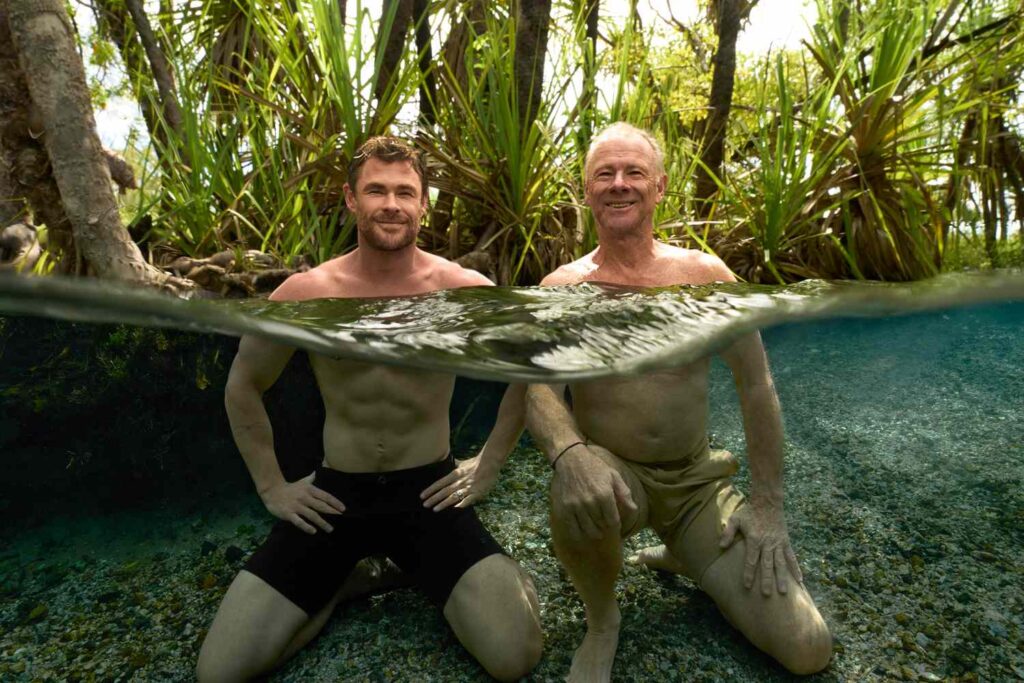NEED TO KNOW
Chris Hemsworth shares an intimate, and at times, heartbreaking, look at his father Craig’s struggle with the early stages of Alzheimer’s — and the therapeutic attempts to help him halt the progression of the disease — in the new Nat Geo documentary, Chris Hemsworth: A Roadtrip to Remember.
The documentary, which premieres on Nat Geo on Nov. 23, takes an inside look at the family’s journey with reminiscence therapy. According to Dr. Suraj Samtani, a clinical psychologist at the Center for Healthy Brain Aging at UNSW Sydney, who consulted on the documentary, it’s a specific method that uses memories to help strengthen the neural connections in the brain.
Craig Parry/National Geographic
“We know every time we re-access a memory, the connection between the neurons gets strengthened,” Samtani tells PEOPLE. “It’s similar to adding more roads going into a suburb. You have more options to get to that suburb, and next time you want to go there, if one road is blocked, you can take another road.”
You can access old memories through music, photos, or, as the Hemsworths did, by recreating the setting where the family lived during the ’90s. Filmmakers used family photos of the house where Chris Hemsworth and his brothers grew up to recreate the interior — right down to the framed pictures on the mantle.
“Recreating the house in the outskirts of Melbourne was just such a key opportunity,” Samtani tells PEOPLE. “Usually we use albums and songs, but to recreate an entire house like that is unbelievable. It’s like reminiscence therapy to the max.”
When the documentary begins, Craig Hemsworth is having difficulty remembering previous conversations. There’s a moment when they arrive at the recreated house that he asks over and over again when his wife, Leonie, is coming. (She was meeting them there later.) Chris is visibly worried by the repetitive questions and says it’s the first time his father has displayed real symptoms of Alzheimer’s.
Craig Parry/National Geographic
But as the reminiscence therapy continues, Craig’s cognitive abilities start improving — especially after he and Chris go on a 200-mile motorcycle road trip to meet with an old friend, Spencer, with whom Craig used to wrangle wild bulls and feral cows in the outback town of Bulman. It’s a job Craig describes as “very dangerous.”
Memories rooted in adrenaline can be stronger, Samtani tells PEOPLE. “Adrenaline memories or memories involving fight or flight, they get stored in the amygdala, the fear center of the brain directly, rather than getting stored in the outer layer of the brain, the cortex, where all our other memories are,” he says. “Let’s say if you’re remembering your graduation, you’ll remember feeling happy about it, but you won’t feel the same happiness you felt at that time. Whereas a fear memory, you will actually feel the original fear you felt at that time, and the same with these adrenaline memories. All the memories get unlocked with emotion.”
“It’s quite an adrenaline kind of job to wrangle those bulls in the outback, quite dangerous,” Samtani said. “But a thrill at the same time.”
Craig Parry/National Geographic
The interactions with other people are important, too, Samtani, who has authored studies on the role social connections can play in staving off Alzheimer’s and dementia, tells PEOPLE. As Chris and his father bond on the road trip, revisiting old haunts, Craig’s memories do come back. “It was really effective,” Samtani tells PEOPLE. I saw him initially being really reserved, really unsure where he was, what was going on. And by the end, as you can see in the documentary, he’s laughing, he’s smiling, he’s remembering all these key memories from his past, and he’s really confident.”
“I think that that for us was a success to get him out of his shell and feeling more like himself.”
Reminiscence therapy, he tells PEOPLE, does need to be kept up. “It’s an ongoing process because the effects last for about three to six months.”
And, Samtani shares, the biggest misconception about Alzheimer’s disease is that “it’s an end-of-life sentence, and it’s really not. It’s possible to live well with dementia and Alzheimer’s, and it’s really possible to do all the things you enjoy and be physically, mentally and socially active — and that will actually slow down the rate of cognitive decline.”
Chris Hemsworth: a Roadtrip to Remember, premieres Nov. 23 on Nat Geo.

